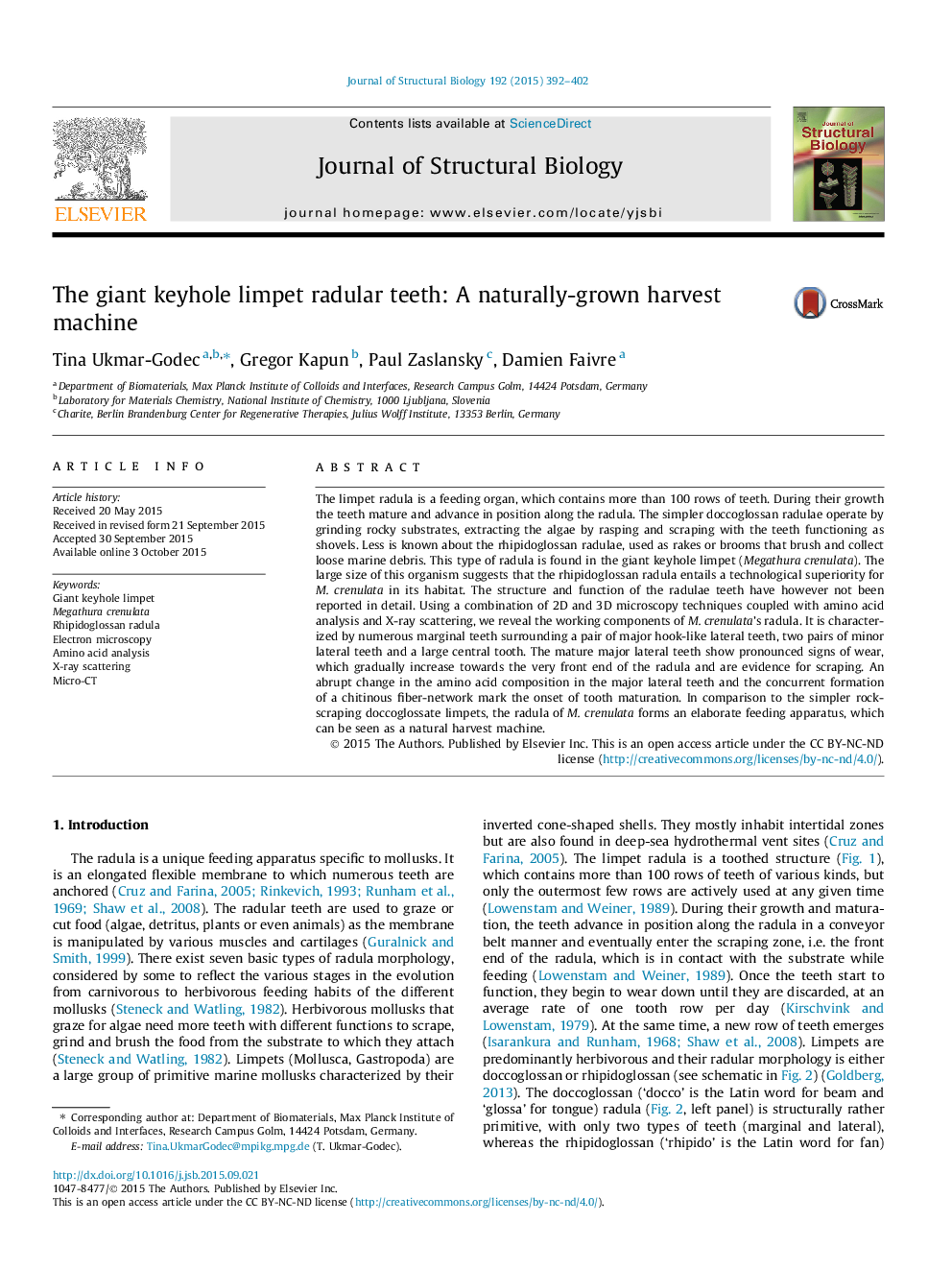| Article ID | Journal | Published Year | Pages | File Type |
|---|---|---|---|---|
| 5913652 | Journal of Structural Biology | 2015 | 11 Pages |
Abstract
The limpet radula is a feeding organ, which contains more than 100 rows of teeth. During their growth the teeth mature and advance in position along the radula. The simpler doccoglossan radulae operate by grinding rocky substrates, extracting the algae by rasping and scraping with the teeth functioning as shovels. Less is known about the rhipidoglossan radulae, used as rakes or brooms that brush and collect loose marine debris. This type of radula is found in the giant keyhole limpet (Megathura crenulata). The large size of this organism suggests that the rhipidoglossan radula entails a technological superiority for M. crenulata in its habitat. The structure and function of the radulae teeth have however not been reported in detail. Using a combination of 2D and 3D microscopy techniques coupled with amino acid analysis and X-ray scattering, we reveal the working components of M. crenulata's radula. It is characterized by numerous marginal teeth surrounding a pair of major hook-like lateral teeth, two pairs of minor lateral teeth and a large central tooth. The mature major lateral teeth show pronounced signs of wear, which gradually increase towards the very front end of the radula and are evidence for scraping. An abrupt change in the amino acid composition in the major lateral teeth and the concurrent formation of a chitinous fiber-network mark the onset of tooth maturation. In comparison to the simpler rock-scraping doccoglossate limpets, the radula of M. crenulata forms an elaborate feeding apparatus, which can be seen as a natural harvest machine.
Related Topics
Life Sciences
Biochemistry, Genetics and Molecular Biology
Molecular Biology
Authors
Tina Ukmar-Godec, Gregor Kapun, Paul Zaslansky, Damien Faivre,
